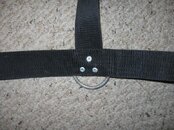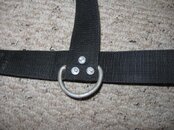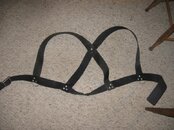Hi
I just got my first backplate & harness bcd and i very excited about it that i am thinking of a DIY project of converting my basic harness to deluxe harness.
would you assist me with any ideas or tips ? my main target is ti install a shoulder buckle for easy mounting.
Dive Rite Basic Harness System
Dive Rite Deluxe Harness Systems
I design, manufacture and "fit" back plates and wings for my customers.
I've done it 1000's of times.
A huge percentage of my customers are either newer divers, or brand new to a back plate and wing.
They all have had some experience with Jacket / vest BC's
It is *very* common for divers with experience with conventional BC's to assume they will need some sort of quick release to be able to don and doff a BP&W.
This springs from the way the typical jacket / vest BC is used. They are typically worn with the harness very snug, usually in an effort to keep the tank from flopping around, and or to keep the bc from crawling up on the diver at the surface.
The usual drill is to adjust the harness to max, but on the jacket BC and pull hard to tighten the shoulder straps. The tank still flops, given that there is nothing but fabric between the tank and the diver, and the bc, lacking a crotch strap still slides up the diver at the surface, but that is how the typical jacket gets used.
BP&W are different. The tank is securely mounted to a wide plate. That takes the "roll" or "flop" out of the cylinder to diver interface. And they have a crotch strap, when properly adjusted the crotch strap insures both the diver and rig rise out of the water when gas is added to the wing.
What does all this mean in terms of harness adjustment? Simple, it means a simple "hogarthian" stye harness need not be worn bug eyed tight.
Hogarthian harnesses aren't worn sloppy loose, but they do not need to be anywhere as snug as a typical Jacket BC.
Before you decide that you need to cut / sew / modify your new harness make sure you have it properly adjusted, and practice donning and doffing just the plate in front of a mirror.
Remember there are countless 1000's of BP&Ws being used worldwide with no gimmicks added to the harness.
Tobin






